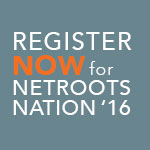After a great run, the Winning the Internet blog has been retired. However, you can still keep in touch with New Media Mentors here.
 More and more, folks are starting to realize that one size doesn’t fit all. If you want your email subscribers to keep opening your emails, taking action, and moving up the ladder of engagement, you’ve got to make sure the emails they’re receiving are relevant to their lives.
More and more, folks are starting to realize that one size doesn’t fit all. If you want your email subscribers to keep opening your emails, taking action, and moving up the ladder of engagement, you’ve got to make sure the emails they’re receiving are relevant to their lives.
One of the ways you can do this is by segmenting your email list. This involves sending an email to a portion (or segment) of your list only—the people that will find the message the most valuable. There are countless ways you can segment. Here are some ideas to get you started.
Personal data
This could be any kind of personal information you have in your database, like:
- Location (city, state, zip, region or country)
- Interest (expressed during signup, or at another time)
- Demographic info
Action behavior
- Time since subscription (particularly useful for welcome campaigns)
- Type of actions taken (petitions, letters to the editor, events, etc.)
- Level of engagement
- Time since last action
- Interest (deduced from response to different types of emails)
Donation behavior
- Amount of last donation
- Largest previous donation
- Time since last donation
Anything else in your database
Any organization defined fields in your database (volunteers, board members—any type of categorization or data you have that wasn’t mentioned above).
My advice is don’t be too afraid to give segmentation a try. If your email is wildly successful with a particular segment, you can always go ahead and send it to the rest of the list. On the flip side, if your email doesn’t perform well with the folks that it’s most relevant to, it’s definitely not worth turning off the rest of your list.




Comments are closed.